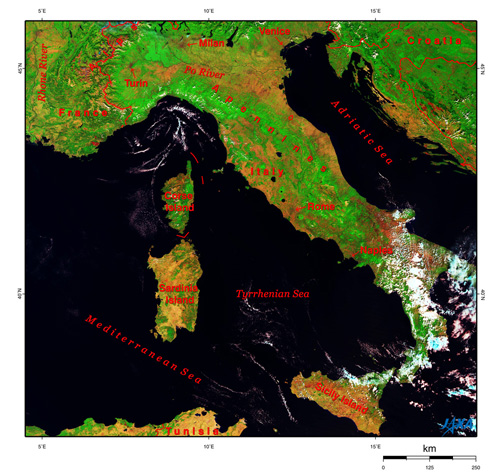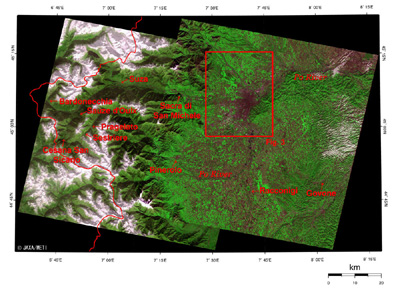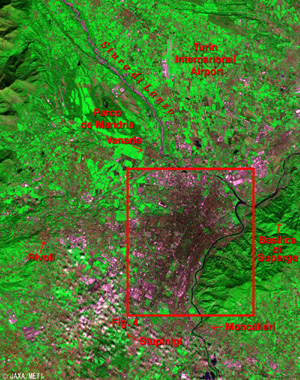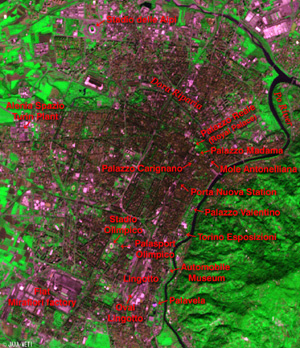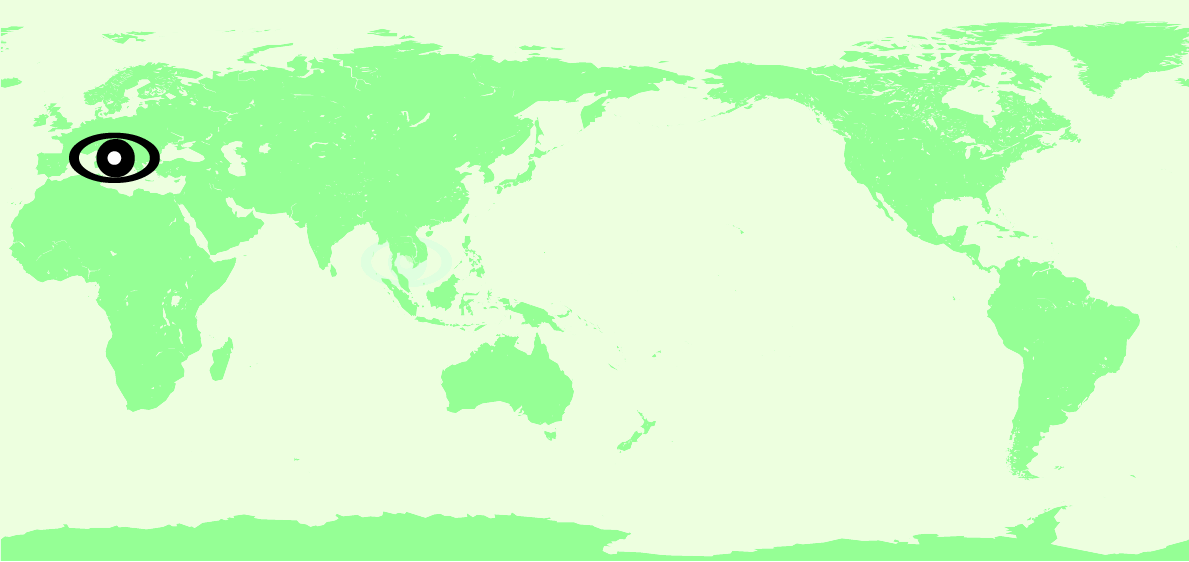Seen from Space 2006
Zoom in on the Town of Turin in Northwest Italy
Turin, the state capital of Piedmont in northwest Italy, will soon host the 20th winter Olympic Games.
In the Torino Olympic Games, the opening and closing ceremonies and the skating competitions will be held in Turin, the curling competitions in Pinerolo, and the skiing, snow boarding, and other winter competitions in the mountainous region centered on Sestriere. The monastery Sacra di San Michele, the most famous Benedictine abbey, is located near the entrance to the Sousa Valley on the west side of Turin. In Racconigi to the south of Turin and in Govone to the southeast, there are castles and parks composing "Residences of the Royal House of Savoy," which was added to UNESCO's World Heritage list in 1997.
In 1562, Emmanuel Philibert, Duke of Savoy, decided to move the capital from Chambery (presently in France) to Turin. This event was an opportunity for growth, and many buildings in the baroque style were constructed based on the 17-18th century city planning in Turin and its surroundings. Therefore, Turin has orderly rows of stores and houses on streets in a grid format. The Dukedom of Savoy became the Kingdom of Sardinia after acquiring Sardinia Island in 1720. It became the Kingdom of Italy after the unification of modern Italy in 1861. Turin remained the capital seat until the capital was moved to Florence in 1865.
Among the "Residences of the Royal House of Savoy," the Palazzo Reale (Royal Palace), Palazzo Madama, and Palazzo Carignano, appear in the upper right of this letter U, and Palazzo Valentino appears along the Po River. Neighboring Palazzo Reale's Duomo is famous for the La Santa Sindone (Holy Shroud), which is said to have wrapped the body of Christ after His execution. Also in the upper right of the letter U is Mole Antonelliana with its 165m-high tower, the symbol of Turin. Inside Mole Antonelliana is Museo Nationale Cinema (the National Movie Museum). Turin is the birthplace of the cinema industry in Italy, and every November it hosts the "Turin International Film Festival," the largest-scale film festival following Venice. At the right end of the letter U is Porta Nuova station where international trains and long-distance trains arrive and depart. It is a one-and-a-half hour trip between Turin and Milan by Eurostar. Stadio Olimpico where the opening and closing ceremonies of the Torino Olympic Games will be held, and Palasport Olimpico, next to the stadium, where the ice hockey games will be held, are in the lower left of the letter U. Palavela for figure skating and short-track speed skating; Torino Esposizioni for ice hockey games; and Oval Lingotto, the only newly built facility, for speed skating are in the lower right, in the Lingotto area. The Lingotto area below the letter U is the former site of the Fiat Lingotto factory, the biggest automobile manufacturer in Italy. This area was redeveloped in the 1980s and has become a complex featuring concert halls, theaters, trade fairs, art galleries, conference rooms, shopping malls, and hotels. Fiat has become the biggest enterprise group in Italy, still dealing with automobile manufacture, but now also with aircraft manufacture, iron production, publications, finance, construction, information technology, and leisure activities. Fiat moved its headquarters to the redeveloped Lingotto area in 1997. The Automobile Museum, "Carlo Biscaretti di Ruffia," is along the Po River. The huge Mirafiori factory of Fiat can be seen at the lower left in Fig. 4. The Turin Plant of Alenia Spazio can be seen on the left in Fig. 4. There they develop scientific satellites and manned spaceships, and their related payloads, launch vehicles, and space transportation systems and subsystems. The Multipurpose Logistic Module "Raffaello," which was manufactured there for the European Space Agency (ESA), was carried aboard Space Shuttle Discovery. It flew from July to August 2005, and docked with the International Space Station to transport water, food, equipment, and to recover garbage and used articles. JAXA will soon launch the Advanced Land Observing Satellite (ALOS). It will carry the Advanced Visible and Near-Infrared Radiometer-2 (AVNIR-2), which is capable of 10m ground resolution. We will distribute clearer images at that time.
|
|||||||||||||||||||||||||||||||||||||||||||||||
